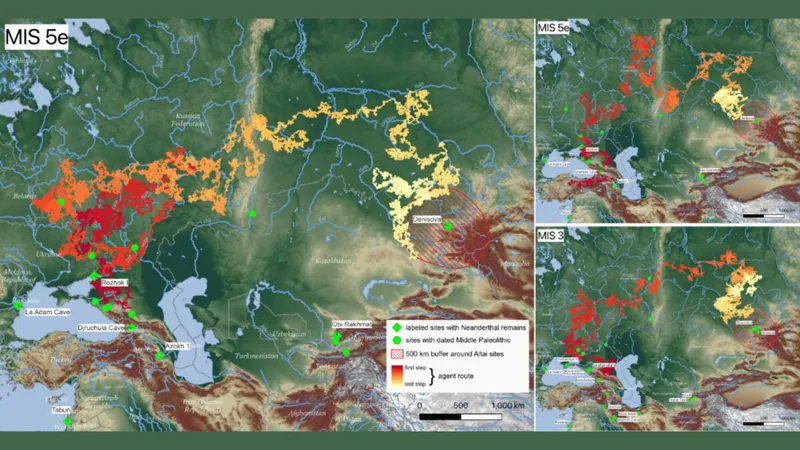
Neanderthals: The Rapid Explorers of Ancient Asia—New Insights Revealed!
2025-06-14
Author: Amelia
Neanderthals: Pioneers of the Ancient World
Around 500,000 years ago, our ancestors branched off from a common lineage, with Neanderthals venturing out of Africa long before modern humans followed suit. These ancient hominins journeyed across Europe and even as far east as Siberia, navigating a vast landscape that would shape their destiny.
A Journey Through Time and Space
Neanderthals first set foot in Asia between 190,000 and 130,000 years ago, with significant migrations occurring between 120,000 and 60,000 years ago. But how did these early explorers traverse such daunting terrains? While archaeological evidence is scarce, a groundbreaking study leverages cutting-edge computer simulations to uncover their potential routes.
Mapping the Migration: A High-Tech Approach
A team of anthropologists created detailed models that mapped out possible paths Neanderthals might have taken to reach Asia. These simulations revealed that by traveling during warmer periods and utilizing river valleys as natural highways, they could have covered an astonishing 2,000 miles (3,250 kilometers) in less than 2,000 years!
Emily Coco, co-author of the recent study published in PLOS One, exclaimed, "Despite mountains and rivers in their way, Neanderthals could have crossed northern Eurasia surprisingly quickly!" This game-changing research illustrates the capabilities of computer simulations in piecing together the puzzles of ancient human migrations.
The Science Behind the Journey
Coco, now a postdoctoral researcher at the University of Algarve, meticulously analyzed various factors like temperature, land elevation, ancient river systems, and glacial formations. This innovative approach not only sheds light on Neanderthal movements but also sets a precedent for future anthropological studies. They identified two key periods of warmer climate—around 125,000 years ago and 60,000 years ago—that facilitated these migrations.
A Journey Confirmed by History
The paths identified align strikingly with known Neanderthal archaeological sites and intersect areas once inhabited by Denisovans, highlighting an intricate web of interactions. Radu Iovita, another co-author and associate professor at NYU’s Center for the Study of Human Origins, stated, "Neanderthals could have migrated thousands of kilometers from the Caucasus Mountains to Siberia in just 2,000 years by following river corridors.
This groundbreaking study not only supports long-held theories about Neanderthal movements based on genetic evidence but also emphasizes the impact of climatic conditions on migration patterns. With these insights, we are beginning to unravel the complex narratives of our prehistoric relatives and the expansive journeys that shaped human lineage.









 Brasil (PT)
Brasil (PT)
 Canada (EN)
Canada (EN)
 Chile (ES)
Chile (ES)
 Česko (CS)
Česko (CS)
 대한민국 (KO)
대한민국 (KO)
 España (ES)
España (ES)
 France (FR)
France (FR)
 Hong Kong (EN)
Hong Kong (EN)
 Italia (IT)
Italia (IT)
 日本 (JA)
日本 (JA)
 Magyarország (HU)
Magyarország (HU)
 Norge (NO)
Norge (NO)
 Polska (PL)
Polska (PL)
 Schweiz (DE)
Schweiz (DE)
 Singapore (EN)
Singapore (EN)
 Sverige (SV)
Sverige (SV)
 Suomi (FI)
Suomi (FI)
 Türkiye (TR)
Türkiye (TR)
 الإمارات العربية المتحدة (AR)
الإمارات العربية المتحدة (AR)